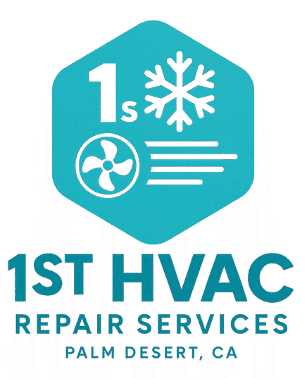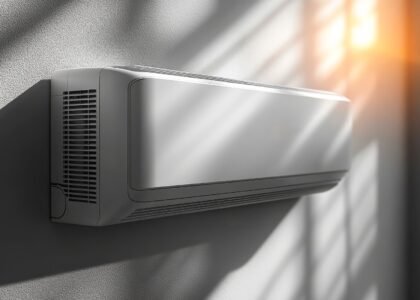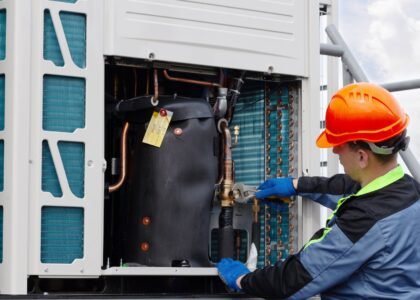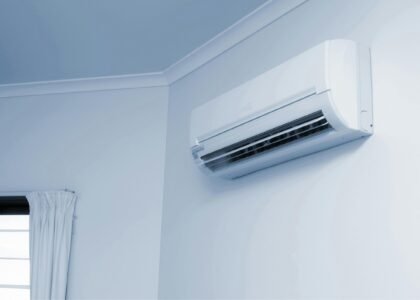When it comes to maintaining a comfortable and efficient home, most homeowners focus on keeping their HVAC system running. However, even a well-maintained unit can underperform if your home’s air flow isn’t balanced. Air flow balancing ensures that every room receives the right amount of conditioned air, preventing hot or cold spots and unnecessary energy waste.
In this post, we’ll explore why air flow balancing matters, the benefits of a properly balanced system, and how you can identify if your home needs it.
What Is Air Flow Balancing?
Air flow balancing is the process of adjusting your HVAC system so that air is distributed evenly throughout your home. This isn’t just about comfort—it’s about efficiency and long-term system health. When airflow is uneven:
- Some rooms may be too hot or too cold
- Your HVAC system works harder than necessary
- Energy bills can increase
- Indoor air quality may suffer
A balanced system ensures that every room receives the right amount of air, creating a comfortable environment and reducing strain on your equipment.
For more details on this process, check out Air Flow Balancing.
Signs Your System Needs Air Flow Balancing
Even if your HVAC system is running, you may notice symptoms indicating an imbalance. Recognizing these signs early can prevent bigger problems later.
Common Signs Include:
- Hot or cold spots: Some rooms feel significantly warmer or cooler than others.
- High energy bills: Your system is overworking to maintain temperatures.
- Frequent cycling: The HVAC unit turns on and off more than usual.
- Unusual noises: Whistling or banging in ductwork may indicate restricted airflow.
If you notice any of these signs, it may be time to consider professional air flow balancing. Learn more about identifying these issues in Signs Your System Needs Air Flow Balancing.
Benefits of Air Flow Balancing
A properly balanced HVAC system provides both immediate comfort and long-term savings. Here’s what you can expect:
1. Consistent Comfort in Every Room
When airflow is balanced, each room receives the correct amount of heating or cooling. No more arguing over which rooms are too hot or too cold—everyone in your home can enjoy a comfortable temperature.
2. Reduced Strain on Your HVAC Unit
Imbalanced airflow forces your system to work harder, which can lead to premature wear and tear. Balancing airflow allows your unit to operate more efficiently, reducing the risk of breakdowns and extending its lifespan.
3. Lower Monthly Energy Bills
When air is distributed evenly, your HVAC system doesn’t have to overcompensate to reach the desired temperature. This efficiency translates directly into lower energy consumption and smaller monthly bills.
4. Improved Indoor Air Quality
Balanced airflow ensures that air circulates properly throughout your home, helping to reduce stagnation and prevent dust, allergens, and other pollutants from settling in specific areas. This creates a healthier environment for you and your family.
Discover more about the long-term benefits of this process here: The Importance of Air Flow Balancing for a Comfortable Home.
How Air Flow Balancing Works
The process typically involves several steps to ensure your HVAC system operates optimally:
- Measuring airflow: Professionals use specialized tools to determine the volume of air coming from each vent.
- Adjusting dampers: Small gates in the ductwork are fine-tuned to redirect airflow where it’s needed.
- Optimizing registers and vents: Vents may be opened or partially closed to achieve uniform distribution.
- Testing and verification: Airflow is remeasured to confirm that balance has been achieved.
Each home is unique, so this process is customized to your layout, insulation, and HVAC configuration.
DIY Tips to Improve Airflow
While professional balancing is recommended, there are small steps you can take to help:
- Keep vents unobstructed: Don’t block vents with furniture or curtains.
- Clean air filters regularly: Dirty filters restrict airflow and reduce efficiency.
- Seal duct leaks: Even small leaks can cause major airflow issues.
- Adjust ceiling fans: Proper fan rotation can help distribute conditioned air.
These actions can complement professional airflow balancing and maintain comfort year-round.
When to Call a Professional
Airflow balancing requires precise measurements and adjustments. If you notice persistent hot or cold spots, rising energy bills, or unusual HVAC noises, it’s time to seek professional help.
For expert assistance, reach out via our contact page. A skilled technician can evaluate your system and recommend the best solutions for consistent comfort.
Key Takeaways
- Airflow imbalance affects comfort, efficiency, and air quality.
- Balanced airflow reduces HVAC strain, lowers energy bills, and extends system lifespan.
- Professional air flow balancing ensures optimal performance tailored to your home.
- Early intervention prevents long-term issues and maintains indoor comfort.
Ignoring uneven airflow may seem harmless, but the consequences can be costly over time. Investing in proper air flow balancing is a smart choice for comfort, savings, and the longevity of your HVAC system.
Take the Next Step: Don’t wait for discomfort or rising energy bills to signal a problem. Learn more about Signs Your System Needs Air Flow Balancing and schedule an assessment today.





